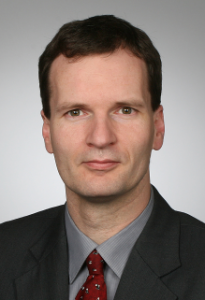Grid Connected Batteries
Abstract:
Stationary batteries can perform many tasks. They help to increase the own consumption of own power generation plants. They can limit the maximum power drawn from the power grid or they can provide grid services in the form of reserve power. One example is ultra-fast charging stations for electric vehicles at grid connection points that are too weak for the maximum charging capacity, but can charge the battery with lower power over a longer period of time. Battery storage systems can also be used in electricity trading or to smooth the energy flow of large wind and solar parks. Grid services and electricity trading can also be offered with the batteries of electric vehicles (“vehicle to grid”) during their parking phases. Today, lithium-ion battery systems are offered at prices below 500 €/kWh for turnkey plants including grid connection if the size of the total plants is in the range above 10 MWh. The problem remains, however, that in hardly any of the application areas economically successful operation can be achieved. On the one hand, the economic viability depends very much on the marginal conditions of the energy industry, which can vary greatly from country to country. For example, there are reports of large battery storage systems in Australia and the USA, which are said to be very economical.
However, it is usually due to a very specific deficiency situation – usually an insufficient expansion of the grid – or is linked to certain remuneration rules, e.g. as a replacement for peak load gas power plants. It is therefore of particular importance to achieve so-called “value stacking”. This involves serving several markets at the same time or at different times, so that more profit can be generated overall. This can also be done in combination with power-to-heat or power-to-gas plants. This means that flexible operating strategies are needed that can be adapted to the unfortunately rapidly changing market and regulatory conditions, and that these strategies enable operation in different markets.
Instructors:
Dirk Uwe Sauer received a diploma in physics from Technical University of Darmstadt and a Ph.D. degree from University of Ulm. In 2003 he was appointed as Junior-Professor and in 2009 as a full professor on “Electrochemical Energy Conversion and Storage Systems” at RWTH Aachen University. Since 2015 he is also Principle Investigator of the Helmholtz-Institute HI MS „Ionics in Energy Storage“ operated by the Helmholtz Center Jülich. His research focus is on storage systems in hybrid and full electric vehicles, energy storage in grids with a high penetration of renewable energies including economic analysis, post-mortem analysis, ageing and lifetime prediction of batteries, modelling and diagnostics for batteries, impedance spectroscopy and impedance based modelling, and energy system analysis with regard to energy storage demand and sector coupling. The main technologies in focus are lithium-ion batteries, lead-acid batteries, supercaps, redox-flow batteries; concepts and consequences of a CO2-free energy supply.
Since 2006 Prof. Sauer is the scientific chair of the International Renewable Energy Storage Conference (IRES), and jointly with Prof. Martin Winter since 2009 the scientific chair of the international conference “Advanced Battery Power”. He is also Editor in Chief of the “Journals for Energy Storage” (Elsevier). Since 2014 he acts as a Director of JARA Energy (Jülich Aachen Research Alliance) representing about 2800 scientists and engineers in the field of energy research. In 2015 he became a Member of the German National Academy of Engineering Science (acatech). In 2017 he was appointed by the three German national science academies ACATEC, Leopolodina and Union der Deutschen Akademien der Wissenschaft as the director-in-chief of the interdisciplinary academy project “Energy system of the future” which aims at analyzing and describing the energy system and its option for further development with about 120 scientists from all desciplines. He is also co-founder of the companies P3 Energy & Storage GmbH, BatterieIngenieure GmbH und eBusplan GmbH. He published more than 150 paper in scientific journals.
